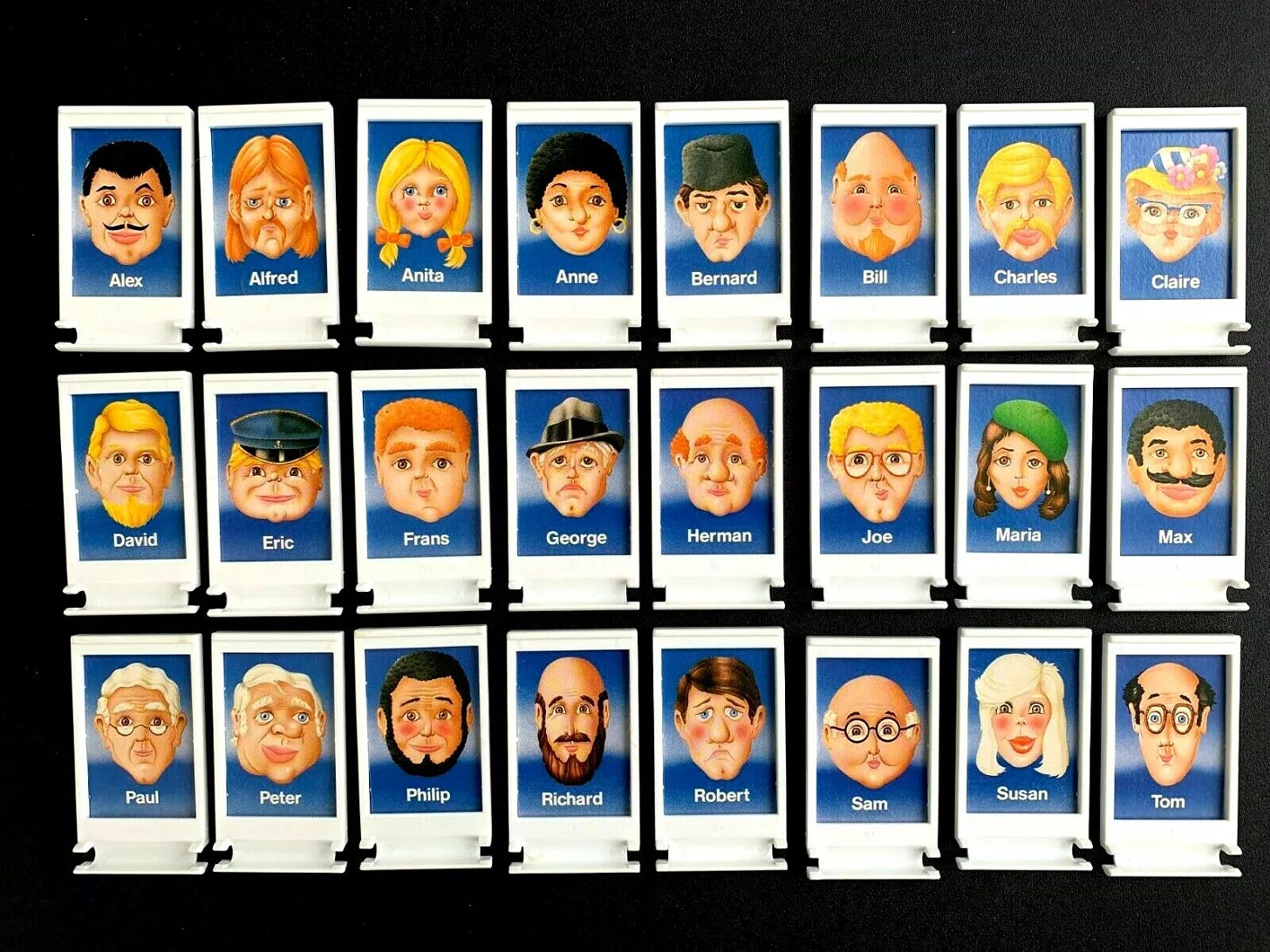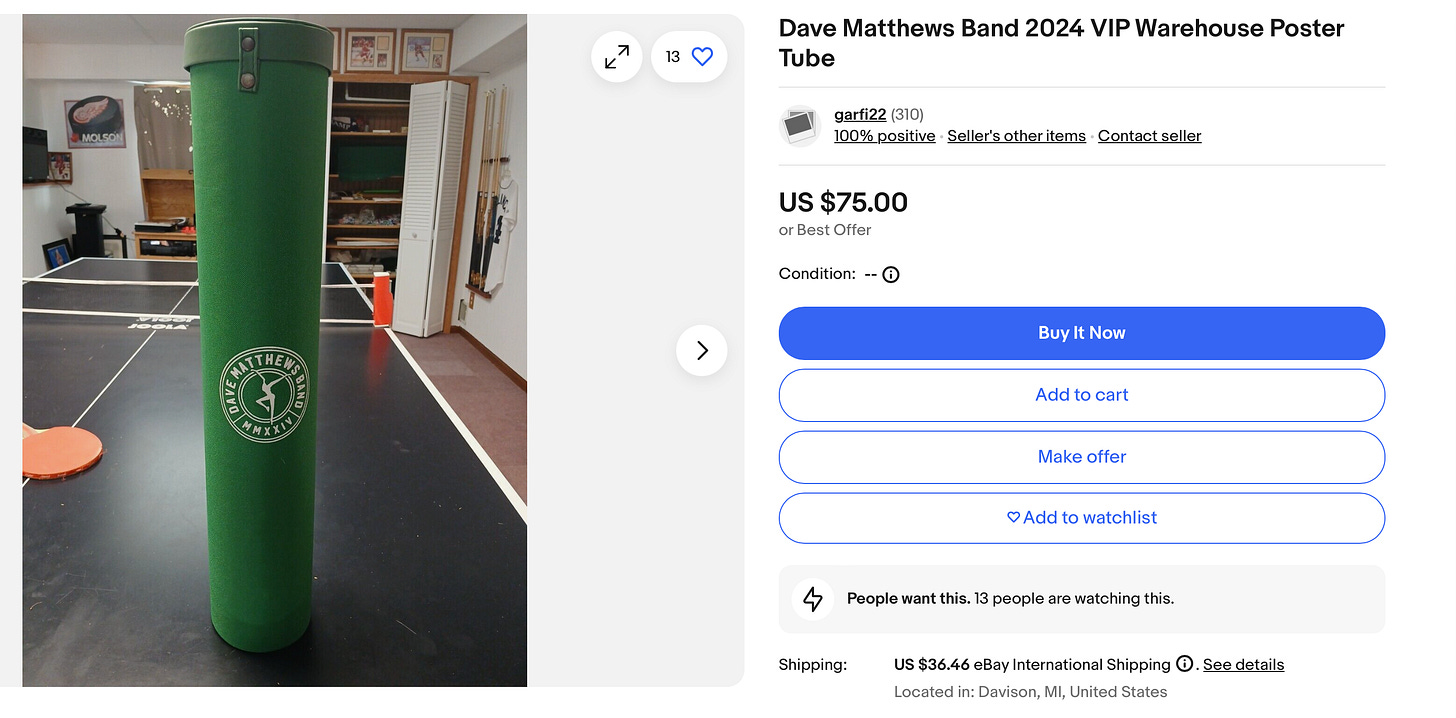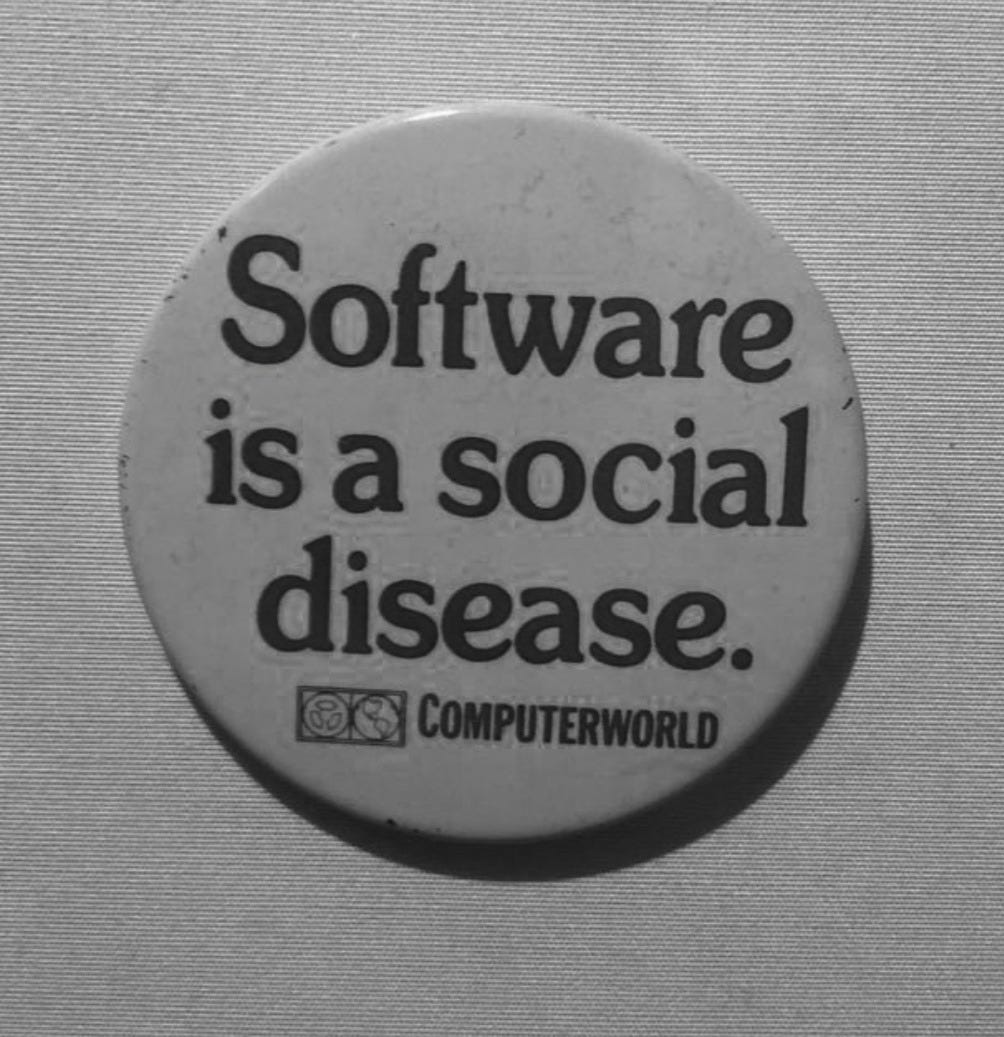“DEFENCE IS A SOFTWARE PROBLEM” - THE HELSING WEBSITE
WHAT IF CHINA LAUNCHED A DRONE SWARM OVER NEW YORK CITY AND IT WAS JUST 12,000 DRONES DOING THE SUPREME LOGO IN RED AND WHITE LIGHTS?
“ARE YOU MAKING OVER $100k/YEAR BUT LIVING IN A ONE DOLLAR BODY? THEN THIS VIDEO IS FOR YOU.” - @THESAMUELJOHNSTON, INSTAGRAM FITNESS AND NUTRITION COACH

Last month was Spotify Wrapped month. That time of year when social media feeds are littered with a high-fructose, color-coded deluge of infographic displays of statistics, rankings and charts. By sharing Spotify Wrapped results on social media, users convert harvested data about their personal listening habits, moods and consumption patterns into an interactive spectacle that showcases their taste and identity.
Apparently, my most listened-to song was an hour-long drone piece I sometimes listen to while reading, “The Clocktower At The Beach (1979)” by William Basinski, which I find highly unlikely when I listen to “Strange Magic” by ELO on repeat every single day.
It told me that Cocteau Twins were my most listened-to artist of 2024, but that also felt incorrect. I did listen to them quite a bit in the despondent, early winter months of the year, but barely after that. I lost, found and eventually discarded my mind while listening to the entirety of Sun Ra’s recorded output available on Spotify in the summer, but that was not really reflected in the stats.
It seems as though I am not the only one who felt that something was off here, as apparently, people were “disappointed” with 2024’s Spotify Wrapped, accusing the service of relying too heavily on artificial intelligence and providing inaccurate statistics that lacked depth.
What a sad shame.
What a letdown.
What an absolute travesty.
Regardless, they were shared.
Why is Spotify Wrapped such a big deal? Are people primarily concerned with showcasing their taste to others, or to themselves? Is this kind of thing just something we now do as a culture out of habit or pressure? Is there some sort of sick subconscious pleasure we derive from watching ourselves being presented with an analysis of the data that has been mined out of our souls by a $100 billion-dollar company that’s run by a bald Scandinavian reptile?
…or is it all simply just for fun?
About a month ago, I went to the “legendary” Katz’s Delicatessen in the Lower East Side of Manhattan for the first time. If you’ve never been there, picture a massive rectangular room populated by too many tables laid out too close together, cafeteria style.
On one side of the room are the kitchen and ordering stations, above which the menus are hung. The prices on the large boards look like they have been changed or overlaid many times. Currently, an order of latkes is around $15.00 USD. An omelette will run you upwards of $20.00 USD. A bagel with lox and cream cheese will probably hit $22.00 USD after tax and tip. I got a tiny bowl of matzo ball soup, and it was something like $12.00 for three tablespoons of broth and a ball of damp cracker.
The walls across from the kitchen are covered in wood and tons of American shit—neon beer logo signs, 375+ framed photos of actors giving a thumbs-up beside bulbous bald men with goatees, retro signage, and a poster that describes how to save someone from choking. The place is completely over-lit by long overhead lines of retina-scorching, white-hot fluorescent lightbulbs that are so bright they really make you just hate your life.
They force you to take a ticket from a security guard when you enter this delicatessen, which must be presented upon exit. A sign says that failure to present this ticket upon exit means you will be subjected to a $50 charge. I didn’t quite get the whole system, but maybe I’m slow. I never got higher than a 51 percent in high school math, but I also never failed. I bet you couldn’t pull that off, could you?????
Between the layout of this place and the aggressive autopsy lighting, you find yourself spending a lot of time looking at other people. The scene inside Katz’s was like an ultra-high-definition film being beamed out of the projection room of the collective American unconscious, portraying a dream about “NEW YORK, NEW YORK” as performed by characters from the board game Guess Who? come to life. Endless variations and combinations of very “standard” facial features, hairstyles, and physiques I’ve never thought about combining. People so normal that I wondered if they could even be real, or if maybe I’d suddenly found myself in the midst of hyper-realistic renderings of randomly generated descriptions of “American people” produced to populate a potentially simulated world instead. So many strange-looking faces and bizarre outfits covering very American-shaped bodies with weird proportions. People were shaped like stacked tires, pears, a butternut squash, family-sized cereal boxes, puzzle pieces, lava lamps, fire hydrants. More than a few looked like Grimace with no neck. You just don’t see people that look like this anywhere else.

My sister, sitting across the table from me, noticed that there were several rotund, nondescript middle-aged white men with black plastic tubes strapped across their bodies waiting in line to order beside where we were seated. I looked to the other side of the room and saw another guy with the same type of tube strapped across his chest, standing by the ticket-distributing deli cop.
What could this possibly be? A yoga mat? Telling by the physiques of the guys holding them, it was unlikely. The tubes also looked too small to contain a yoga mat. Some kind of gun? I’m Canadian. I don’t know what a large gun looks like.
I then noticed stickers on the tubes, and zoomed my eyes in: they were all stickers from various Dave Matthews Band shows. These potato-shaped men were all just arriving at Katz’s after a Dave Matthews Band show at Madison Square Garden, proudly carrying poster tubes littered with stickers from various DMB gigs across their chests. What a bizarre accessory. I started doing some research, and apparently “tubing” at concerts is actually a thing? What the fuck kind of thing to do is that??
Now, this is nothing new, really. Potato-shaped men have been congregating around music festivals and concerts by mediocre-to-offensively-hokey jam bands in America for many decades now, proudly wearing and carrying merchandise around. But much like Spotify Wrapped, there is something about “tubing” and the impulse we have to showcase our taste and fandom that intrigues me.
Why do people feel the need to outwardly express their affinity for and connection to an artist in such a way? Why does branded music merchandise now hold so much more value to consumers than an artist’s actual music? And again, why is Spotify Wrapped such a big deal?
Why?
It must have something to do with IDENTITY BRANDING.
No, not brand identity.
IDENTITY BRANDING.
We now live in a reality where a curated and well-maintained online image or public-facing avatar is an increasingly important and crucial component of our lives, shaping and often determining the contours of our experience within society.
Let’s refer to the set of circumstances that form such a reality as IDENTITY CAPITALISM.
As a stage or subset of what many call late capitalist or neoliberal capitalism, one defining feature of IDENTITY CAPITALISM might be that an individual’s worth and ability to function in society is largely and increasingly dependent on their ability to curate, develop and maintain a sellable outward appearance or IDENTITY BRAND.
An IDENTITY BRAND is a composite construct of images, stances, and alliances put together so as to define oneself as a marketable entity within the digital media ecosphere.
WHAT DO YOU DO?
WHO DO YOU KNOW?
WHAT DO YOU STAND FOR?
LINK IN BIO?
An IDENTITY BRAND precedes you. In an economic reality where all human action has been brought into the domain of the market, the digital avatars that we craft to represent ourselves are often our first point of contact with others in a wide variety of basic social interactions like job searches, community building, and dating.
…or is it all simply just for fun?
I noticed quite a few people on social media taking a moral stance against Spotify amidst the social media Wrapped cycle, posting commentary on how Spotify’s CEO, Daniel Ek, has invested over $100 million USD in Helsing, a European techno-defence firm whose technology “identifies and assesses masses of data to assemble a picturesque viewpoint which military agents could then use at their discretion.”
In their own words:
“Helsing is a new type of defence company, focusing on developing software-based capabilities to protect our democracies. With a diverse and experienced team of engineers and AI talent, Helsing partners with governments and hardware manufacturers to deploy mission-enhancing software. Helsing funds its own research and technology development, which allows it to undertake its own R&D at scale, applying the speed of software development cycles to mission challenges in defence. It employs AI and software to enable faster and more accurate decision-making, and the utilization of data at the tactical, operational, and strategic level. With operations in the UK, Germany, and France, Helsing accesses software and AI talent from across Europe, while serving each country’s specific sovereign requirements.”
“A new type of defence company”
“Focusing on developing software-based capabilities”
“A diverse and experienced team of engineers and AI talent”
“Mission-enhancing software”
“Funds its own research and technology development, which allows it to undertake its own R&D at scale, applying the speed of software development cycles to mission challenges in defence”
“Employs AI and software to enable faster and more accurate decision-making”
What do you call this kind of PR writing? Tech-talk? Startup-speak? Venture capital vernacular?
Quickly scanning over this pitch and perusing their website, one might mistake Helsing for being just another typical software-focused tech startup—lean, smart, and on the bleeding edge.
This interview with Helsing Co-Founder and Co-CEO Torsten Reil on a venture capital focused Youtube channel is interesting for many reasons. Reil’s gentle, bearded stoicism and soft-spoken erudite demeanor is miles away from any old-fashioned, cliched depiction of a buttoned-up military scientist or bloodthirsty warmonger. The guys designing the machinery of genocide now look like this. Look at that nice zip-up sweater. In this interview, he delicately describes the terrifying realities of modern drone warfare, elaborating on the ethical dilemmas he and his colleagues face when trying to determine who their next client might be and the hurdles they face when dealing with various governments. Highly recommended. Watch the second half.

Helsing’s AI platform claims to be able to “boost defense and national security, specifically for liberal democracies, by making them more efficient, using live data.”
The German government has partnered with Helsing to provide AI-based electronic warfare capabilities for Eurofighter SEAD missions. Helsing’s AI platform will “enable the analysis of the radar data gathered onboard the plane and generate precise self-protection measures against modern enemy radars in milliseconds.”
This year, they launched their first strike drone, named HX-2. The drone can be mass-produced, is software-based as well as swarm-capable with a range of 100 km.
These strike drones are already being used in Ukraine, and Helsing is attempting to sell masses of them to NATO allies, including the UK.
Future Combat Air Systems (FCAS) is a multinational joint initiative between Germany, France, and Spain to develop a next-generation combat air system. Part of FCAS is the Next Generation Weapon System (NGWS), which will develop a sixth-generation fighter aircraft and unmanned aerial systems. Helsing won the contract to provide the AI infrastructure that will power this system.
That’s some pretty impressive stuff, no??!!
I mean, they’re not the ones actually dropping the bombs or launching the missiles, so technically, they are just a tech company, no? Coders, not killers.
Surely, you can’t blame the guys who screwed together the V2 rocket for the destruction they caused when someone else launched the rockets, right? They were technically just factory workers, no?
The extent to which, if in any direct way at all, Spotify consumer data will be utilized to aid the development and implementation of this weaponry is not known.
What to do, what to do?

Have you ever unscrewed and disassembled an iPhone, placing the various components out on a table?
Have you ever smelled cobalt, tantalum, tin, and copper soaked in a child’s blood?
If it were disclosed that data harvested out of your music and podcast listening habits was absolutely being used to directly develop and enhance the cutting edge of mass death machinery, would you cancel your subscription to Spotify?
What if it was actually the other way around? What if the industries of mass death are actually responsible in some abstract and impersonal way for Spotify?
What if Spotify does not just support the military-industrial complex—what if Spotify is the military-industrial complex?
As a tree produces an apple, as a flower becomes honey.
For starters, the internet is, and always has been, a weapon. Maybe not in the literal sense, but the emergence of the public-facing internet is deeply interconnected with the military-industrial complex. The same concerns, desires, fears, resources, and bloodthirsty intentions that led to the creation of the atomic bomb are the same ones that led to the development of technologies like ARPANET, which, initially created for secure military communication, laid the groundwork for the global network that would eventually become THE INTERNET.
The cloud computing, high-speed data transfers, and encryption technologies that enable the large-scale infrastructure needed for Spotify to run are all also based on technology with military origins, commissioned, designed, and developed first and foremost to support, protect, and service an astoundingly vast constellation of weaponry.
Google Cloud Platform (GCP) provides the cloud infrastructure for Spotify, a company that has been completely entwined with defense and intelligence agencies, including the U.S. Department of Defense, the CIA, and the NSA, since its beginnings.
In 2023, Spotify and GCP announced an expanded partnership that would “amplify their expertise in infrastructure, data, and analytics, as well as AI and machine learning technologies.”
Thomas Kurian, CEO of Google Cloud, said: “Through this expanded partnership, Google Cloud’s AI tools are helping Spotify to elevate the listening experience for its customers.” Might these be the same Google Cloud AI tools that were used by the United States’ Department of Defense’s Project Maven to analyze vast amounts of footage collected by U.S. drones?
What do we do with this kind of information?
Are we prepared or even able to truly comprehend how deeply entwined our everyday lives are with the technologies, machinations, and intentions of the military-industrial complex?
Should we take a stand and call these companies out? Use our design degrees and immaculate taste to create cool-looking infographics about the immoral relationship between tech behemoths like Spotify and the war machine and circulate them on platforms owned by other tech behemoths?
What would that accomplish? “Awareness”?
Or would that simply be another exercise in online identity branding? Taking a stance, aligning yourself with a politically acceptable moral position before your peers and audience?
Is circulating an infographic or contributing to the ~eternal stream of content~ a political act? Or a replacement for one?
Does it stop there? How far are you willing to go?
Is it cynical, pessimistic, or ignorant to bask in our privilege, overlooking all of this conspiratorial malarkey and simply use these tools, devices, and gadgets for convenience?
…can it it all simply be used just for fun?
We’re not the ones actually controlling those drones, right?














Interesting. All this negative attention to Spotify has made me rethink my relationship to it. About 8 years ago i was proudly showcasing to my friends that I had outlistened them, my 110,000 minutes somehow demonstrating a more elite taste (all the while wracking my brain trying to understand was "float house" was, which is clearly now a low-energy way to make sense of floating points). With my hard pivot to live radio I am increasingly certain that spotify is ruining music. Note recent new yorker piece in which Daniel Ek describes the music world as like "elite sport" - millions of people play soccer but only a few get the big bucks. Former Spotify employee described spotify's only competitor to be silent, with sleek algorithmic systems arriving at lo-fi ambient as silence's greatest foe - basically has the same effect but can be monitized. Kind of like when nestle started selling bottled tap water. BUT what this reveals is that, more so, spotify has become a HEDGE FUND with a lucrative fundraising strategy - giving its investees access to all this cheap music that artists have been conned out of. The rich do what they want! Spotify has brilliantly combined IDENTITY CAPITALISM with the INDUSTRIAL COMPLEX and keeps us bought in through shiny features which are meaningless but, like you point out, our valuable only because they enhance the habit.
Blah blah blah look at me rambling on.
It’s “The Clocktower at the Beach,” not “The Clocktower by the Beach”